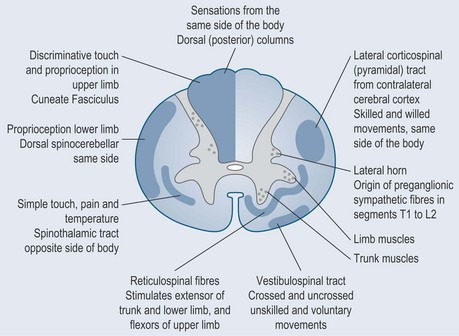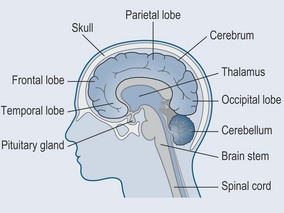Chapter 32 Analgesia and relief of pain
• Second-order neurons: carry the pain stimuli to the thalamus (Figure 32.2) via the lateral spinothalamic tracts.
• Third-order neurons go from the thalamus to the cerebral cortex. The thalamus plays a large role in the integration of pain input, whereas the cortical area deals with the meaningful subjective interpretation of pain and can in some cases override the sensation of pain.
• Chemical: can be triggered chemically at the free nerve ending by changes in the concentration of hydrogen ions (H+), serotonin (5-hydroxytryptamine (5-HT)), histamine, bradykinin and eicosanoids (see Figure 32.3, p. 249).
Bradykinin (Figure 32.3) is released when tissue is damaged and so is found in inflammatory processes, e.g. joint inflammation. It stimulates and sensitizes nerve endings, which leads to the stimulus that registers pain with the body. Anti-inflammatories and aspirin inhibit prostaglandin synthesis and therefore the release of mediators that create pain (see Chapter 30 ‘Inflammation and the immune system’, p. 228).
Analgesics
Sites of Action
• At the site of injury, by decreasing the pain caused by an inflammatory reaction: aspirin, non-steroidal anti-inflammatories.
Terminology
• Analgesia: refers to the specific blocking of the pain receptors, leaving the function of other receptors, such as touch and temperature, intact.
Stay updated, free articles. Join our Telegram channel

Full access? Get Clinical Tree





